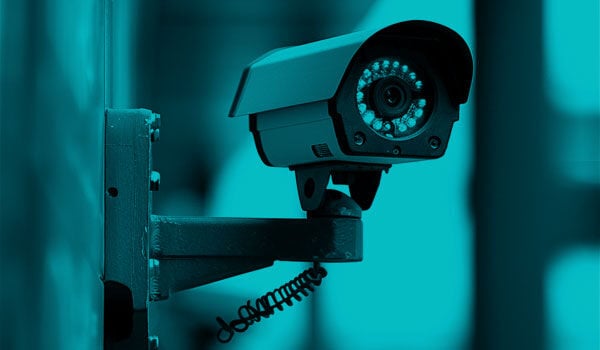If you’re looking to take your SaaS product to the next level and make it global, there are a few challenges that every organization must face and overcome to truly succeed. Managing compliance, maintaining strong security measures, ensuring that operations are scalable and delivering high levels of performance are all individual mountains that each company will have to climb.
Of those lofty peaks, providing high levels of security is of the utmost importance for the long-term success of your organization. To help companies take their SaaS product worldwide, we’re releasing a six-part blog series outlining these challenges (parts 1-4) as well as the different global architecture patterns that can help any company market and deliver their SaaS product to a global audience using AWS and AWS Organizations.
In our last post , we went over compliance basics and the regulations that organizations should be following. Here, you'll find the information you need to understand security requirements and considerations. Let's jump right in!
The basic considerations of SaaS security:
Every organization spends time building their security — no experienced professional needs to be told twice about its importance. But when your organization starts to move outside of its own region, the security concerns that you must take into consideration start to quickly multiply. Before you start to expand, there are a few general guidelines and questions that should be addressed.
Do I have a good idea of what my tenant isolation model is?
When considering a global launch, it’s vital to understand exactly how the data for different tenants within your environment will be stored and how it’s being isolated on a per-tenant basis. Ideally, your organization should store their data in a data store that makes it easy to implement multi-tenant data access patterns ensuring that one tenant can’t access the data of others. While vital at a regional level, as your company and product scale globally this becomes even more important.
Do I have proper Identity and Access Management (IAM) procedures?
Your company will want to have a very clear idea of how you’re running your identity access management procedures for both internal and external users. While many SaaS products have an internal tool for access, some don’t have clear procedures set in place to ensure that employees and third parties can only access what they need. Control over third-party access is vital for any organization as many famous data breaches to SaaS products have originated from that source. Zero trust models work effectively here to ensure that both your internal and external users have correct levels of access to data.
As an effective identity and access management tool, AWS Identity and Access Management is ideal for organizations who want to create guardrails and access controls for their workforce — and keep a close eye on which identities are working in your product at all times. This tool allows you to create permission sets which automatically apply to users, granting your organization the ability to seamlessly integrate policies of least privilege which don’t hinder your users.
Do we have a strong data loss prevention model?
One of the biggest challenges that any SaaS product can face is the loss of personal data. This can negatively affect your business due to reduced levels of trust and any potential damage to your network. When scaling globally, you need to make sure that your company has models to prevent data from being lost, leaked, stolen or taken by malicious actors through malware or ransomware attacks. However, data loss prevention is more than just security — it’s about regulatory compliance (which some would argue is the entire point of security). On top of securing your data, you need to verify that if you’re replicating anything for data loss prevention purposes, you’re doing it in a compliant manner. Countries with data residency laws may strongly frown upon cross-country replication, even for data protection purposes. For this reason, you must have a plan for each of the geographies that you’re working in that not only keeps your data secured but suits the laws of the land.
How well is my data being encrypted?
On top of ensuring that your data loss prevention model is airtight, organizations should encrypt their data both in transit and at rest using the most up-to-date protocols. This ensures that even if data does get leaked, it’s of no use to malicious actors. Furthermore, companies should strongly consider storing personal data, as well as fiscal data (e.g. credit cards), in a tokenized format. This helps to mitigate threats, reduces the scope of your compliance needs and further restricts access to your more sensitive data. By reducing the chances of data being put back together and associated with specific users, your organization can rest more securely in the knowledge that its held data is protected at multiple levels.
Is my software development cycle and software deployment process secure?
It’s not only your applications and data that you have to worry about keeping secure, it’s also how you develop your software. Malicious actors have found ways into the software supply chain and gained access to SaaS products by exploiting the third-party libraries that they depend on. The malware injected into those libraries flows downstream into SaaS software stacks and leaves them vulnerable to attack. To prevent this, your organization must develop processes and work with tools that allow your teams to see these vulnerabilities before they get put into production. When building your software, security should not be the last thing to focus on. According to RedHat, the first priority is to know all of the suppliers in your software supply chain and evaluate their cyber security posture.
Ensuring that your SaaS product is ready to be secure for the global market
When you’re moving your SaaS product from the regional to the world stage, there are plenty of considerations that your organization must be aware of ahead of time — or risk facing data breaches, regulatory compliance penalties and an overall slowdown of work. From guaranteeing that your data is protected from a breach and well encrypted to enforcing strong IAM policies and securing your development cycle, there’s a lot to think about.
When you’re constructing your architecture and procedures for security, utilizing AWS can help your organization quickly create an effective, efficient and secure environment for both your customers and business. By utilizing tools like AWS Identity and Access Management for your IAM and zero trust needs, as well as AWS Organizations to set account management configuration policies, your company can rapidly get ready for a global launch.
If your organization is looking to amp up its security footprint in preparation for a global launch, working with a partner who understands your needs and AWS infrastructure can help you build a strong foundation for growth. At base2Services we’ve helped organizations put their product out in the world with our combination of AWS expertise and DevOps approach. We help companies make sure that they have a solid base of processes and architecture, and can help you improve your security posture.
In our next post, part 3 of this series, I will address the challenges around Scaling and how to ensure your organization can properly scale in an effective and efficient manner, while meeting performance expectations.
To gain further insights into how your SaaS business can achieve success globally, we suggest delving into our other informative blog posts within this six-part series. These posts explore crucial challenges and provide valuable AWS architecture frameworks worth considering.
-
- 4 Key Challenges of Taking Your SaaS Product Global – Part 1: Compliance
- 4 Key Challenges of taking your SaaS product global – Part 3: Scaling - NEXT
- 4 Key Challenges of taking your SaaS product global – Part 4: Performance
- Globalize your SaaS product with 5 AWS architectural patterns
- Utilizing AWS Organizations for your multi-account SaaS architecture
And, if you haven't already, be sure to watch the videos of our webinar on this topic.
Ready to take your SaaS product to the next level? Contact us today to learn more about how base2Services can help you succeed on a global scale.




-600-350px.png)
